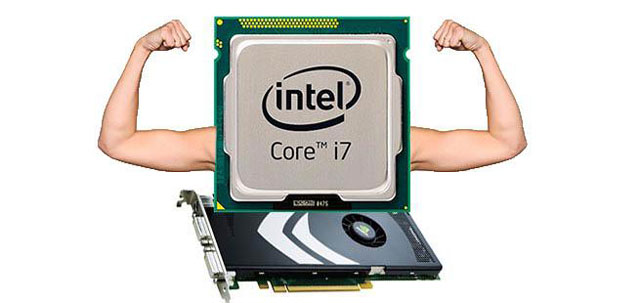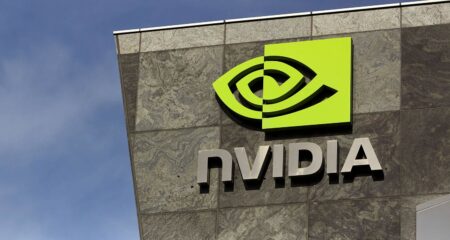Intel’s just-unveiled Ivy Bridge processor family promises faster processing power and better graphics, thanks to a massively-enhanced integrated graphics system. The news has prompted some analysts to say that Ivy Bridge could mean doom for manufacturers of dedicated graphics cards, such as Nvidia and AMD, because Ivy Bridge is just that good.
“Intel has been hammered for its graphics performance, and they did much better in Sandy Bridge, but Ivy Bridge has two times the graphics performance and that’s a pretty significant difference,” said analyst Jack Gold of J Gold Associates.
Graphics-card manufacturers Nvidia and AMD have cause for concern over Intel’s announcement, according to Gold. The small market of people seeking out high-performance graphics cards is made up of mostly hardcore gamers who often build their own desktops. But Ivy Bridge’s improved graphics will probably be enough for the average consumer, which could mean that Nvidia’s already-struggling graphics-card business could get hit hard.
“Ivy Bridge is continuing a downward spiral for graphics-card manufacturers that has been going on for a while now,” said Gold. “Extreme gamers who want very powerful graphics cards are in a niche market already, and it’s shrinking. That doesn’t bode well for Nvidia, because its graphics chip market is falling off faster than its mobile chip market. For 95% of folks out there, integrated graphics will be what they want.”
AMD might not be as affected by Ivy Bridge, says Gold, because its processor manufacturing business is doing fine and it will continue to manufacture chips for laptops and desktops.
Nvidia corporate communications representative Ken Brown responded to Gold’s comments, saying that there are many gamers who rely on graphics cards. Brown noted that integrated graphics have struggled and the original equipment manufacturers who make most PCs are still choosing to put graphics processors in their laptops and desktops.
“Some people are assuming that everyone will have the latest [and fastest] flavour of Ivy Bridge and that’s a false assumption,” said Brown in an interview. “We’ve found in the past that about half the latest games don’t play effectively on integrated graphics, especially in the case of Sandy Bridge. Ivy Bridge seems to have improved, but there may still be issues with big games like Battlefield 3.”

Analyst Patrick Moorhead also believes that Nvidia and AMD will still have a place in an Ivy Bridge world, because the Intel chip’s integrated graphic processing unit can only provide so much performance.
“There will still be a big need for Nvidia and AMD graphics cards because game graphics are getting better, but [Ivy Bridge] will make the graphics experience better at certain levels,” said Moorhead.
Both Moorhead and Gold agree that Ivy Bridge is a big step for faster processors, which will pave the way for high-performance Ultrabooks. These super-thin, portable computers need to maintain strong battery life without sacrificing too much performance, which Ivy Bridge can provide.
“I think Ivy Bridge will really help the experience of Ultrabooks and Apple’s new products because it offers even better performance than before. I fully expect Ivy Bridge to be in Apple products,” said Moorhead.
Both agree that Intel’s “tri-gate architecture” is a big improvement for performance and battery life. Tri-gate allows Intel to tweak Ivy Bridge chips to run at either very high performance levels or at lower power levels.
“Tri-gate lets you be a lot more flexible with power. You can have higher performance at the same amount of power, or less power with same experience, which means better battery life,” Moorhead said.
There is no doubt that hardcore gamers will still flock to Nvidia for graphics cards to play Battlefield 3. However, Ivy Bridge may be the answer to the graphics problems that the average consumer and business user is looking to solve. — VentureBeat![]()
- Image: Sarah Mitroff
- Image: Sarah Mitroff




